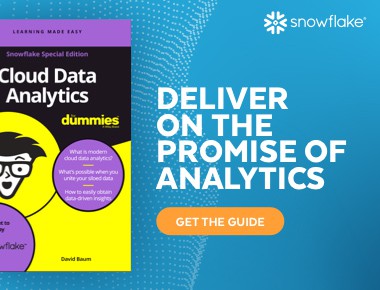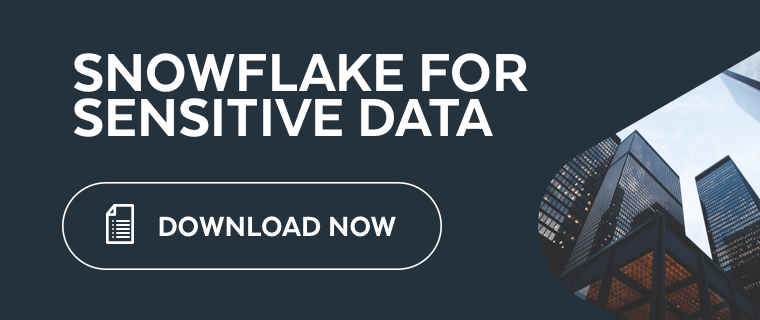Data Analytics for Retailers
Retailers are witnessing a historic shift in the way consumers shop. Today’s consumers can easily compare prices, research products, and make purchasing decisions that align with their lifestyle. Whether online or in-store, retail customers have come to expect shopping experiences to be personalized to their unique needs and preferences, order fulfillment and returns that are hassle-free, and responsive customer service available via multiple channels. Analytics for retailers enables a data-driven approach to meet these expectations.
Benefits of Using Data Analytics in Retail
Accurately understanding and responding to the forces shaping today’s retail environment is key to surviving and thriving in this fast-changing industry. Retailers that have been quick to build a modern data analytics program have been able to more easily adapt to changing consumer preferences, supply chain disruptions, labor market forces, and more. Here are five ways that implementing a robust data analytics program provides a significant competitive advantage.
Boost customer engagement
Internet-empowered customers have forced retailers to abandon many time-tested engagement and retention strategies. The ability to conduct extensive product research online has loosened the traditional bonds of consumer brand loyalty, commoditizing the shopping experience. Retail data analytics can be used to counter this problem by identifying under-engaged customer segments who are likely to increase their spending with additional personalization and outreach efforts. Analytics can also be used to identify where wallet share is being lost, where that spending is being directed instead, and the factors driving consumers to take their business elsewhere. Lastly, the application of data analytics in retail can lower rates of customer attrition by identifying behavioral markers that indicate waning engagement. These insights allow retailers to proactively intervene to re-engage customers close to churning.
Optimize pricing and increase profitability
Optimal pricing is vital to the survival of any retailer. Setting prices too high can lose valuable market share, while pricing too low can result in unsustainably thin profit margins. But finding the optimal price point has become increasingly challenging. Advanced analytics for retail can help, taking into account complex factors such as level of demand present in individual customer segments, differences in consumer shopping behavior across channels, and competitive intensity. Analysis of broad data sets can yield valuable insights impossible to see without a complete view across multiple data sources, making it possible for retailers to create a strategic framework for price-setting that’s sustainable in the long term.
Create a more efficient supply chain
Retail supply chains are notoriously complex, often including myriad individual suppliers spread across multiple continents. This, combined with a proliferation of new product offerings and the continued need to cater to quickly changing consumer tastes, makes adopting a data-driven approach to supply chain essential. Advanced analytics for retailers can improve inventory management practices by analyzing large data sets from multiple sales and inventory systems to accurately identify the items most likely to go out of stock or be overstocked. Real-time analytics can also provide a comprehensive view of transportation and supplier networks, making it easy to identify ways to trim costs and streamline operations.
Improve risk and fraud detection capabilities
Both internal and external sources of fraud can quickly sap a retailer’s profitability. Examples include unauthorized, excessive, or duplicate charges from contractors and product suppliers, fraudulent returns, or even fraudulent expenditures originating from inside a retail purchasing department. Analytics for retailers can be used to sift through financial transactions to identify and flag patterns and anomalies that may indicate fraudulent activity.
Workforce development and management
Human capital is one of the most valuable assets for any retailer, making employee scheduling, development, and retention an important application of data analytics in retail. Analytics programs can help retailers better align staffing needs with anticipated on-peak times, including special promotion periods and holidays where customer traffic is highest. Highly productive employees can be scheduled during the busiest times to ensure store operations are operating at peak efficiency during the busiest times of day. An advanced scoring model can be integrated into the hiring process to ensure that the candidates with ideal skill sets are hired first. Retention risk analytics for retailers digests large amounts of data from internal and external sources to flag behaviors that indicate employees are about to leave, making it possible to intervene before valuable talent is lost.
Analytics in Retail Use Cases
There are many applications of data analytics for retailers. Let’s examine how three specific types of retailers can use analytics to boost sales and increase customer satisfaction.
Grocery ad personalization
Customers with specific nutritional needs, such as those with a gluten-free diet or lifestyle-driven food preferences such as vegetarian or vegan, aren’t going to respond to broad-brush promotions for the store bakery or a sale in the meat department. Grocery retailers can leverage data gathered on each individual customer’s in-store purchases to personalize the email and social media offers they send them. Providing this level of customization offers a more personalized shopping experience tailored to the purchasing patterns of each customer, building brand loyalty and increasing wallet share.
Online retail inventory management
Empty digital store shelves represent lost sales opportunities and can cause customers to migrate to competitors who are able to consistently keep desired products in stock. With potentially hundreds or thousands of items for sale, traditional threshold-based models of inventory management are not sufficient. Modern retail analytics analyze past purchasing, stock, and third-party and public data, including weather and point-of-sale data, to precisely predict demand.. Brick-and-mortar retail safety
In-store accidents involving customers or employees have a negative impact on a brick-and-mortar retailer’s bottom line. Workforce analytics programs are capable of analyzing and detecting the root causes of safety incidents. The results of this analysis can be used to proactively address store-level procedures and provide enhanced employee training that can prevent similar incidents from occurring in the future.
Challenges to Implementing Retail Analytics
Retailers willing to invest in a modern data analytics program stand to gain invaluable benefits. But there are three challenges that often hold them back from experiencing these benefits.
Siloed data
Analytics programs are only effective if they can pull in data from all relevant data sources. Many retailers have valuable data stored across multiple systems. These data silos make gaining an accurate, comprehensive view nearly impossible and prevent decision-makers from making truly data-driven decisions.
Legacy infrastructure
Modern analytics involves processing extremely large data sets that require substantial compute resources to execute. On-premises, traditional infrastructure just isn’t capable of meeting the demands of retail analytics. Even retailers using cloud infrastructure can experience difficulties if their cloud data warehouse doesn’t easily enable speedy data ingestion and transformation with flexibility and elasticity.
Inability to share and receive data from partner sources
Data collected by individual retailers is often incomplete. Supplementing in-house data with data from third-party and public sources provides a more comprehensive view. But securely sharing and receiving data from partner sources is often not possible using legacy systems. Without this supplemental data, retailers are left with gaps that may result in inaccurate insights.
Retail Analytics and Snowflake
The Snowflake Data Cloud allows retailers and manufacturers to access, govern, and share data seamlessly. With Snowflake, retailers can deliver a more personalized customer shopping experience online or in-store, create more-resilient supply chains, and make data-driven merchandising decisions. The Snowflake Data Cloud provides retailers with a single source of truth where data from multiple sources can be stored and accessed in real time, empowering data-driven decisions based on a current, comprehensive view of all relevant data.
See Snowflake’s capabilities for yourself. To give it a test drive, sign up for a free trial.

